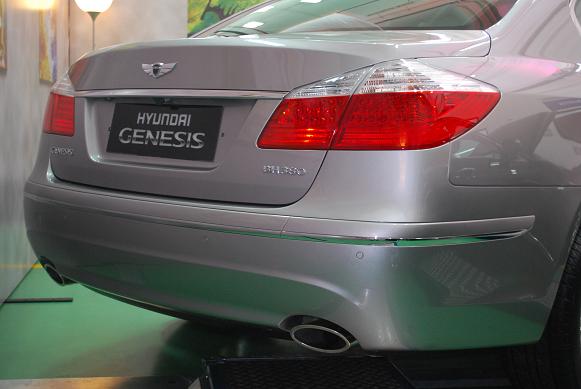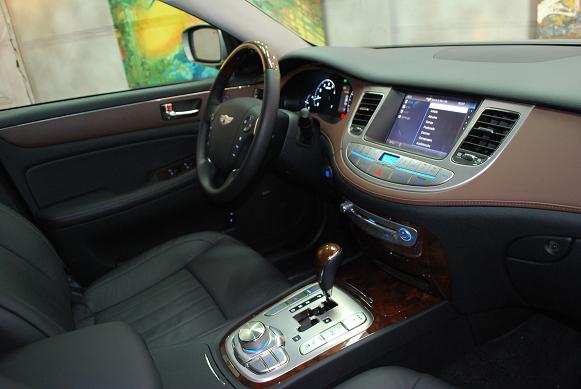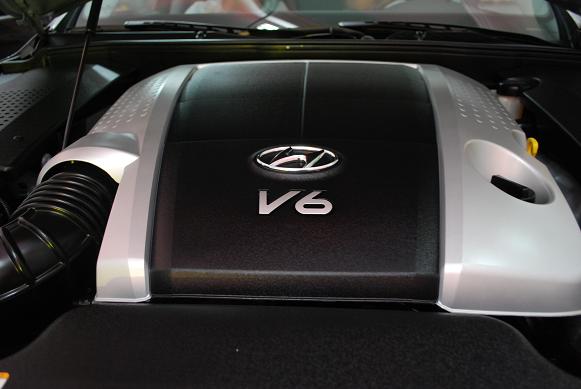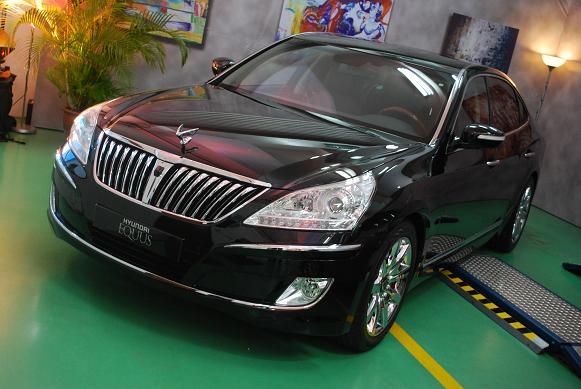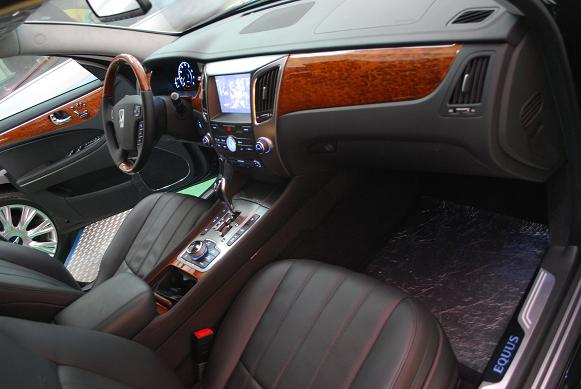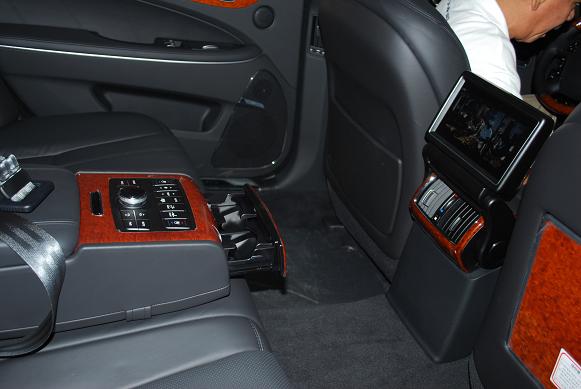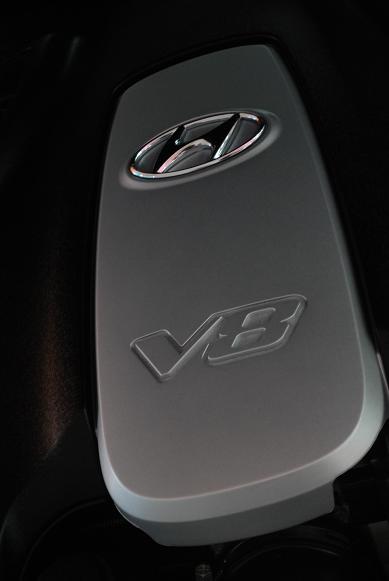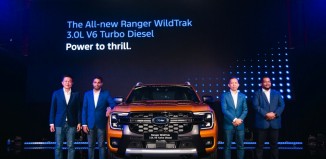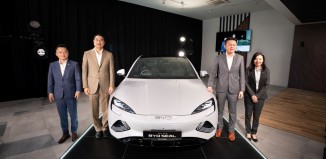A new take on refinement: the Equus and the Genesis
Not too long ago, cars wearing the Hyundai badge were always automatically associated with the three Ds – dull, dreary and dreadful. The ownership experience of a Hyundai, or any Korean car for that matter, without exception, always included all of high fuel consumption, pricey spare parts, speedy depreciation, and the usual “Why you buy Korean car?” questions from your relatives in one neat package.
Now, if you were placed in charge of a company producing products bearing the brunt of such criticisms, what would you do? You could opt to do nothing about it, continue to produce the same crap year in year out, and bank on the strategy of undercutting all your opponents. Hyundai could have done that in the face of the criticisms hurled at them from every conceivable direction. But they didn’t. They had bigger ideas.
They set themselves a target of not only improving their products, but to be among the world’s top five auto manufacturers. Critics thinking of the old Accents and Sonatas must have had a good laugh, because on the strength of those cars alone, Hyundai’s laudable goals will remain at that, laudable, but not achievable. But Hyundai was not a company of empty talk. They backed their words with action, and set in motion a chain of events to propel themselves among the elite.
The joke is now on the critics. Hyundai’s ascend is very much in full force. Though the i30 did not fully impress me (that was not driven under favourable conditions, mind you), the magnitude of their improvement was there for us to see. A study published in 2007 showed Hyundai’s brand value to be bigger than Porsche, Lexus and Nissan. Even if the current generation of Hyundais can’t match Honda and Toyota, worry not, the next generation will.
However, Hyundai are a little bit more ambitious than that. They aren’t looking for comparisons with their Japanese rivals. For their flagships, the Equus and the Genesis, has the company’s cross hairs aimed a little further, across the continents to Germany. Though neither model will be sold in our market, Hyundai Sime-Darby Motors recently gave the Malaysian media a chance to get up close, but unfortunately not drive, both at their headquarters.
The idea was that we go in, check the car out, snap some photos, and then hopefully come back to our desks and pen a story to tell you how brilliant these two cars were, and how they show what Hyundai’s engineers are truly capable of. Whatever they put into their flagships today, we can definitely expect all the said goodies to trickle down to those of us sitting lower down the food chain in future incarnations of the i10, i30, Elantra et cetera.
During our brief preview, the impressions from both cars given to us were positive, especially when you consider the kind of cars they were rolling out just ten years ago. On paper, and in the skin, the Genesis and Equus would stand up to comparison against the best of them. Various reports that I have read claimed that Hyundai benchmarked the Genesis against things ranging from the E-class to the 5-series to the Lexus GS. No room for false modesty.
Not that Hyundai possess any. The front end of both the Genesis and the Equus are boldly styled, with large grilles, upswept headlights and lots of chrome. The rear styling of both cars, however, are significantly more toned down to the point of being a complete anti-climax to the dramatic front ends.
If you take a stroll around either car, you would not find Hyundai’s stylized ‘H’ – a logo representing a brand worth US$4.5b – anywhere. Instead, both cars wear their own badges that seem to be Hyundai’s reinterpretations of famous symbols. The one representing the Genesis resembles Bentley’s winged-B, whereas the one on the Equus looks suspiciously similar to the Spirit of Ecstasy.
As we were granted neither the time nor opportunity to test these cars, we really do not know how this car would behave on the road. But, you know what? We don’t care. For one, anyone who would buy either of these cars would certainly delegate the job of driving to a chauffeur. They could handle more like a bull than a BMW, and it absolutely would not matter. You might probably be interested to know that journalists from countries where these cars are sold gave very positive reviews.
The interior of both cars are filled with expensive-looking materials and also packed with toys. The fold-down central armrests contain switches for the climate control, and ICE. Rear head and leg room are available aplenty, but if the boss behind decides more room is needed, switches to adjust the front passenger seat forwards are within easy reach. If Hyundai built either of these cars to a cost, believe me, it wasn’t felt. The only thing that made the interiors felt cheap were the two-point lap belts for the centre rear passenger that was found in both cars.
To complete their luxury car briefs, both the Equus and Genesis are built on rear-wheel drive platforms. The Genesis shown to us is powered by the 306hp 3.8-litre Lambda V6 engine mated to an Aisin 6-speed automatic transmission. Meanwhile, the Equus has the award-winning 4.6-litre V8 Tau engine paired with a ZF-sourced 6-speed auto gearbox.
On paper, and most probably on the road as well, the Genesis and the Equus are likely to stand up well against competition even from the most established of luxury marques. The problem? Badge. We were told that if Hyundai were to sell the Genesis and Equus here, they would retail for RM800k and RM1.1m respectively. That’s not the kind of money people associate with Hyundais.
The good news is that, if half the toys in these cars trickle down to all the upcoming Hyundais for the masses, we can all look forward to their future offerings.









